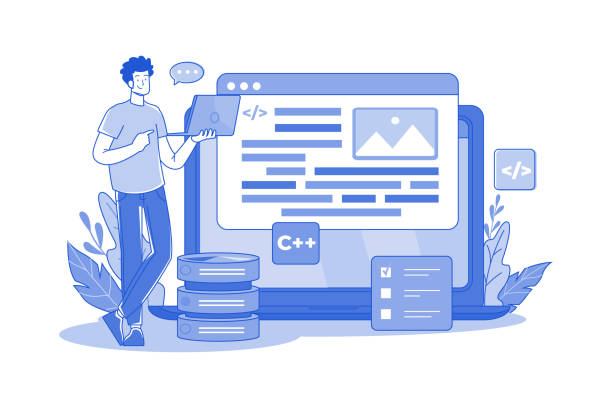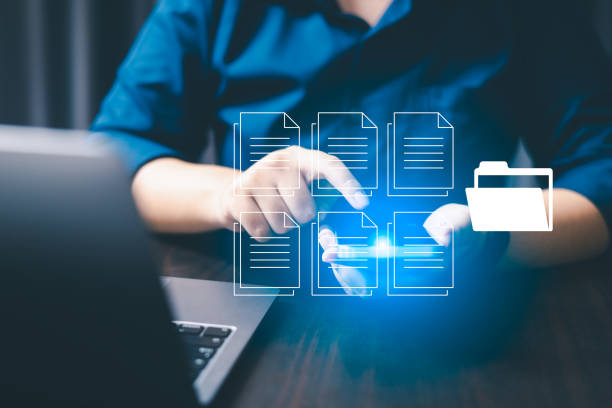Introduction and Importance of Secure Website Design

In today’s digital age, an online presence is an undeniable necessity for businesses and individuals.
However, with increasing reliance on websites, the #importance of #secure_website_design is becoming more apparent than ever.
Websites are always targets for cyberattacks due to storing sensitive information, financial transactions, and personal communications.
An insecure website can lead to data loss, reputational damage, and ultimately, significant financial losses.
Therefore, emphasizing #website_security_assurance in the early stages of design and development is crucial.
This section explains the main reasons for the importance of secure website design and the consequences of negligence in this area.
Website security is not just about preventing hacking; it also includes protecting user privacy, ensuring data integrity, and service stability.
Failure to adhere to the principles of secure website design can lead to violations of data protection regulations (such as GDPR or banking data), heavy fines, and even loss of customer trust.
Today’s users are more aware than in the past, and websites that do not follow security principles quickly lose their trust.
Therefore, investing in secure website design is not just an expense but a strategic investment for the long-term preservation and growth of your business.
Further in this article, we will delve into more details on how to implement these principles to ensure your website is resilient against cyber threats.
Does your company’s website perform as befits your brand? In today’s competitive world, your website is your most important online tool. Rasaweb, a specialist in professional corporate website design, helps you to:
✅ Build customer credibility and trust
✅ Convert website visitors into customers
⚡ Get a free consultation!
Common Web Security Threats and Countermeasures
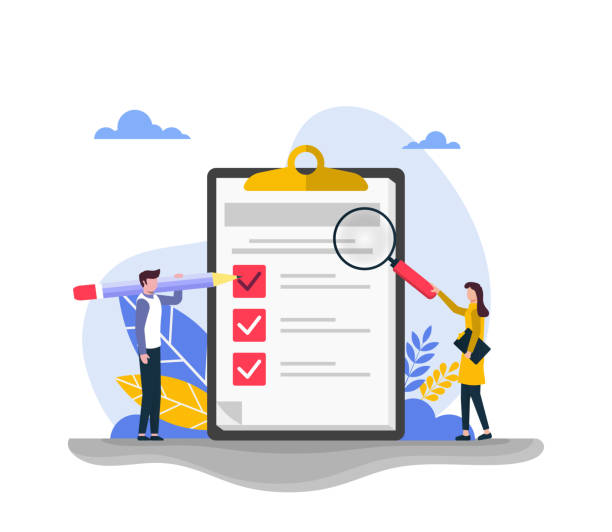
Understanding #common_web_threats is the first step in secure website design.
Websites are constantly exposed to various types of cyberattacks, each of which can cause different damages.
Among the most common of these attacks are SQL injection, cross-site scripting (XSS), cross-site request forgery (CSRF), denial-of-service (DoS/DDoS) attacks, and security misconfigurations.
Each of these attacks infiltrates the system using specific methods, compromising information or disrupting website functionality.
To counter these threats, there are numerous solutions in the field of secure website design.
To prevent SQL injection, using parameterized queries and precise input filtering is essential.
Combating XSS requires proper validation and encoding of all user inputs before displaying them on the page.
CSRF attacks can be neutralized with anti-CSRF tokens.
For DoS/DDoS, using Web Application Firewalls (WAF) and CDNs (Content Delivery Networks) that identify and block suspicious traffic is very effective.
Furthermore, regular software updates, strong data encryption, and the implementation of robust authentication mechanisms are considered fundamental principles of secure website design.
Understanding these vulnerabilities and implementing appropriate defensive solutions is the foundation of any effective #cybersecurity strategy.
This analytical approach helps us have a comprehensive approach to creating a secure website.
Basic Principles of Secure Coding and Best Practices

#Secure_coding is a fundamental pillar of secure website design.
Developers must integrate security principles into their software development process from the outset.
This includes rigorous input validation, preventing malicious code injection, and proper handling of programming errors.
For instance, user input should never be trusted without validation; otherwise, it can open a door to SQL injection or XSS attacks.
Using modern web development frameworks with built-in security features, such as Laravel for PHP or Django for Python, can significantly help enhance security.
These frameworks typically leverage internal mechanisms to counter common attacks like CSRF and XSS.
Furthermore, adhering to the Principle of Least Privilege means that each part of the application and each user should only have access to the minimum resources and permissions necessary to perform their tasks.
This approach minimizes the extent of damage in the event of a breach.
Using Prepared Statements in the database, instead of direct string concatenation, is a very effective solution to prevent SQL injection.
Also, proper password management and encryption (using strong hashing functions like bcrypt) are of particular importance.
Secure coding is an ongoing process that requires continuous education and awareness of developers regarding the latest vulnerabilities and best practices in secure website design.
Creating a secure website requires precision and commitment in every line of code.
Table 1: Secure Coding Principles
| Security Principle | Description | Implementation Example |
|---|---|---|
| Input Validation | Checking and sanitizing all user input data to prevent malicious code. | Using input filters, data type validation, length, and format validation. |
| Injection Prevention | Preventing code injection into databases (SQL) or scripts (XSS). | Using Prepared Statements, validation, and output encoding. |
| Error and Logging Management | Not displaying sensitive information in error messages to the user, secure logging of events. | Displaying general error messages, logging error details on server logs. |
| Session Management | Generating strong session IDs and expiring sessions after a period of inactivity. | Using HttpOnly and Secure cookies, setting session expiry times. |
The Role of SSL/TLS Certificates in Web Security
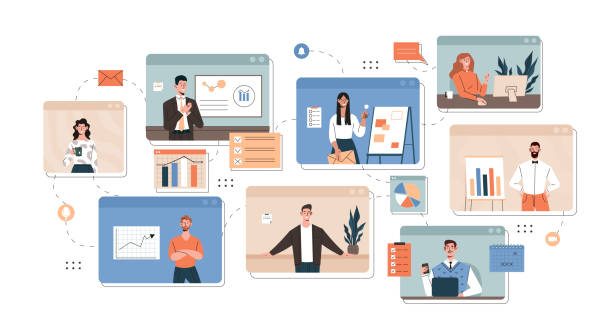
#SSL/TLS_certificates are considered one of the most fundamental and vital components in secure website design.
These certificates are responsible for encrypting communications between the user’s browser and the website server.
In other words, any information exchanged between the user and the server, whether login credentials, credit card details, or any other sensitive data, is encrypted by SSL/TLS to protect it from unauthorized access by third parties (such as hackers).
Without SSL/TLS, data is transmitted in plain text, making it easily interceptable and exploitable.
The importance of SSL/TLS extends beyond mere encryption.
These certificates also help authenticate the website, assuring the user that they are indeed connected to their intended website and not a fraudulent one.
This assurance is indicated by the display of a green padlock in the browser’s address bar and ‘https://’ instead of ‘http://’.
Browsers deem websites without SSL/TLS insecure and warn users, which can severely harm your website’s traffic and SEO.
From an SEO perspective, Google prefers HTTPS-enabled websites in its rankings, so implementing SSL/TLS is not only essential for secure website design but also vital for its visibility and success.
These certificates play a key role in website security and protecting user privacy.
Does your current corporate website present a worthy image of your brand and attract new customers?
If not, with Rasaweb’s professional corporate website design services, turn this challenge into an opportunity.
✅ Significantly enhances your brand’s credibility and image.
✅ Paves the way for attracting new leads and customers.
⚡ For a free and expert consultation, contact Rasaweb now!
Database Security and User Information Protection

#Database_security is a core pillar of secure website design; as most sensitive user and website information is stored there.
Successful database attacks can lead to the disclosure of personal, financial, and even organizational data, with irreparable consequences.
Therefore, database protection must be a priority.
One of the most important measures is the use of strong encryption for sensitive data both at rest and in transit.
In addition to encryption, access to the database must be severely restricted.
This includes using strong and unique usernames and passwords for each application and employee.
The Principle of Least Privilege should also be observed here, meaning that each user should only have access to the data and operations necessary to perform their duties.
Regular and secure database backups are also crucial for data recovery in case of an attack or system failure.
These backups should be stored in a secure location separate from the main server.
Regularly updating database software and server operating systems is also essential to address known security vulnerabilities.
Continuous monitoring of database logs to identify suspicious activities can also help detect intrusions early.
All these measures ensure data security in the secure website design process and help create a secure website and reliable website.
Web Application Firewalls (WAF) and Intrusion Detection Systems
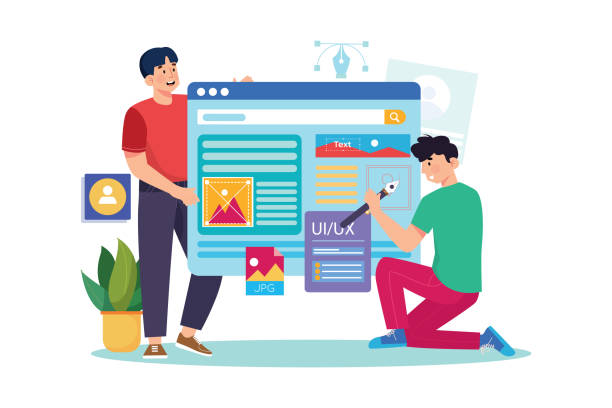
Within the framework of secure website design, the use of advanced defense tools such as #Web_Application_Firewalls (WAF) and #Intrusion_Detection_Systems (IDS) plays a vital role.
A WAF is an additional security layer positioned between the user and the website server that monitors, filters, and blocks HTTP traffic.
This tool can identify and block common attacks like SQL injection, XSS, and Cross-Site Request Forgery before they reach the website.
A WAF can be implemented as hardware, software, or cloud-based and offers configurable security rules to protect against new threats.
Intrusion Detection Systems (IDS) and Intrusion Prevention Systems (IPS) are also tools that identify suspicious activities or intrusion attempts within the network or system.
An IDS merely alerts, while an IPS can automatically act to prevent an attack.
These systems detect any anomalies, which might indicate a cyberattack, by examining traffic patterns and user behavior.
Combining WAF and IDS/IPS provides a powerful defensive strategy for secure website design.
A WAF operates at the application layer, protecting the website against specific web attacks, while IDS/IPS has a broader view of network and system activities.
These two tools complement each other and, by working together, help you build a more secure website that is more resilient to increasing threats.
This is a specialized section of website security.
Continuous Vulnerability Scanning and Updates
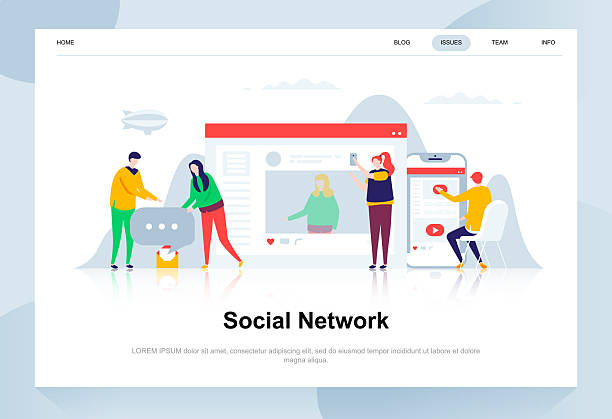
#Continuous_vulnerability_scanning and #regular_updates are inseparable principles of secure website design and maintenance.
The cyber threat landscape is constantly changing, and new vulnerabilities are continuously discovered.
Therefore, a one-time secure website design is not enough; you must continuously assess and keep your website updated from a security perspective.
This process includes regular security scans, penetration testing, and code reviews to find potential security flaws.
Automated vulnerability scanning tools can help identify common weaknesses, but manual penetration testing, performed by specialists, provides a deeper level of review and discovers more complex vulnerabilities.
In addition to scanning and testing, regular updates to the software used on your website, including the Content Management System (CMS), plugins, themes, programming libraries, and even the server operating system, are crucial.
Developers of this software continuously identify vulnerabilities and release security patches.
Failure to apply these updates can leave your website vulnerable to known attacks.
A proactive approach to secure website design involves creating a regular schedule for reviewing and applying updates.
This process includes monitoring security alerts and news, as well as subscribing to security newsletters to stay informed about the latest threats.
This section of website security provides news and guidance.
Table 2: Security Update Checklist
| Item | Description | Recommended Frequency |
|---|---|---|
| Content Management System (CMS) | Updating WordPress, Joomla, Drupal core, etc. | Immediately after security updates are released |
| Plugins and Themes | Updating all installed plugins and themes. | Weekly / Monthly or immediately after vulnerability announcement |
| Server Operating System | Applying security patches for Linux, Windows Server, etc. | Monthly / Quarterly or immediately for Critical Patches |
| Database Software | Updating MySQL, PostgreSQL, MongoDB, etc. | Quarterly / Semi-annually |
| Vulnerability Scan | Using automated tools to find weaknesses. | Monthly / Quarterly |
| Penetration Testing | Comprehensive security assessment by a specialist. | Annually / After major changes |
Security in Content Management and Plugins

Most websites use Content Management Systems (CMS) such as WordPress, Joomla, or Drupal.
These platforms are very popular due to their ease of use and flexibility, but #CMS_security and #plugins pose a major challenge in secure website design.
Many cyberattacks on websites occur through vulnerabilities in plugins, themes, or the CMS core itself.
Therefore, choosing secure CMS and plugins and maintaining them correctly is of paramount importance.
To create a secure website, you must first use official and up-to-date versions of the CMS and apply all core updates as soon as they are released.
Regarding plugins and themes, only use reputable sources and well-known developers.
Free or unknown plugins can contain malicious code or not be properly maintained, becoming a security hole.
Before installing any plugin, review user comments and ensure it is regularly updated.
Also, minimize the number of installed plugins and themes to reduce the attack surface.
Deleting unused plugins and themes is also an important step in improving website security.
Additionally, strengthening passwords for CMS administration panel access and using two-factor authentication (2FA) for login adds another layer of defense to your website.
This educational and guiding approach helps secure website design be carried out more comprehensively.
Are you falling behind in competition with large online stores?
Rasaweb, with its professional e-commerce website design, brings your business online and increases your market share!
✅ Increase brand credibility and customer trust
✅ Easy shopping experience leads to more sales
⚡ Get a free website design consultation now!
Authentication Protocols and Access Management

#Authentication_protocols and #access_management are two main pillars of secure website design, ensuring that only authorized users have access to specific information and sections of the website.
Authentication is the process of verifying a user’s identity, while access management (Authorization) determines what an authenticated user can do or which resources they can access.
Negligence in this area can lead to unauthorized access, information disclosure, and even system damage.
To strengthen authentication, it is essential to use strong and unique passwords, enforce periodic password changes, and implement mechanisms to prevent Brute-Force attacks (such as limiting login attempts).
Two-Factor Authentication (2FA) or Multi-Factor Authentication (MFA) provides an additional layer of security, making it difficult for attackers to gain access even if the user’s password has been stolen.
2FA typically involves something the user knows (password) and something they have (SMS code, authenticator app).
In terms of access management, the Role-Based Access Control (RBAC) model is an effective approach.
In this model, access permissions are assigned to users based on predefined roles (e.g., administrator, editor, regular user).
This reduces the complexity of access management and ensures that each user only has the minimum necessary privileges to perform their duties (Principle of Least Privilege).
Regularly reviewing access permissions and deactivating unused user accounts are also crucial for maintaining website security in the secure website design process.
This section of the article provides an analytical and specialized perspective on creating a secure website.
Conclusion and Future of Secure Website Design
![]()
As stated throughout this article, secure website design is not a static process but a continuous and evolving effort that requires awareness, planning, and meticulous implementation of security principles.
From the initial stages of coding to ongoing maintenance and updates, every aspect of the website must be developed with security in mind.
Cyber threats are constantly changing and becoming more sophisticated, so our defensive approaches must also be flexible and advanced.
Investing in developer team training, utilizing advanced security tools, implementing strong authentication and access policies, and conducting regular security audits all contribute to creating a secure website and reliable website.
The future of #secure_website_design is moving towards greater automation, the use of artificial intelligence and machine learning for detecting complex threats, and faster response to attacks.
The DevSecOps concept, which integrates security from the very beginning of the software development lifecycle, will increasingly gain popularity.
Furthermore, with the emergence of technologies like Web 3.0 and a focus on privacy and decentralization, new challenges and opportunities will arise in the field of website security.
Ultimately, secure website design is not just a technical issue but an ethical and legal responsibility to protect user data and maintain their trust.
By adhering to the principles and best practices introduced in this comprehensive guide, we can take a significant step towards building a safer and more sustainable internet.
This educational and explanatory article concludes, briefly covering all #web_security concepts.
Frequently Asked Questions
| Row | Question | Answer |
|---|---|---|
| 1 | What is secure website design? | The process of designing and developing websites that are resilient to cyberattacks and protect user data and privacy. |
| 2 | Why is website security important? | To prevent data breaches, financial losses, damage to company reputation, and to maintain user trust. |
| 3 | What are some common website security threats? | SQL Injection, XSS (Cross-Site Scripting), CSRF (Cross-Site Request Forgery), weak authentication, and outdated software. |
| 4 | What is SSL/TLS and what is its role? | Protocols for encrypting data between the user’s browser and the website server, ensuring secure and private communication. |
| 5 | How can SQL Injection attacks be prevented? | By using Prepared Statements/Parameterized Queries, input validation, and ORMs (Object-Relational Mappers). |
| 6 | What is the role of a Web Application Firewall (WAF) in security? | A WAF monitors and filters HTTP traffic between a web application and the internet to prevent malicious attacks. |
| 7 | Why is regular updating of software and libraries essential? | Updates include patches for known security vulnerabilities that attackers can exploit. |
| 8 | How can XSS attacks be prevented? | By sanitizing and escaping all user inputs before displaying them on the web page and by using Content Security Policy (CSP). |
| 9 | What does the Principle of Least Privilege mean? | It means that users and systems are granted only the minimum necessary permissions to perform their tasks, to prevent unnecessary access to resources. |
| 10 | What is the importance of proper user session management? | To prevent user session hijacking and unauthorized access to user accounts through secure and expiring session tokens. |
And other services of Rasa Web Advertising Agency in the field of advertising
Smart UI/UX: An innovative platform to improve click-through rates with attractive UI design.
Smart UI/UX: A professional solution to increase sales focusing on attractive UI design.
Smart Marketing Automation: Revolutionize customer acquisition with SEO-driven content strategy.
Smart Link Building: An effective tool for campaign management with the help of SEO-driven content strategy.
Smart Sales Automation: An innovative platform to improve customer behavior analysis with attractive UI design.
And over hundreds of other services in the field of internet advertising, advertising consultation, and organizational solutions
Internet Advertising | Advertising Strategy | Advertorial
Resources
- Secure Website Design
- Comprehensive Website Security Guide
- Website Security Checklist
- Website Security Guide
? Ready to transform your business in the digital space? Rasaweb Afarin Digital Marketing Agency, by providing comprehensive services including modern UI website design and SEO optimization, is with you on the path to achieving online success.
📍 Tehran, Mirdamad Street, next to Central Bank, Southern Kazeroun Alley, Ramin Alley, No. 6

